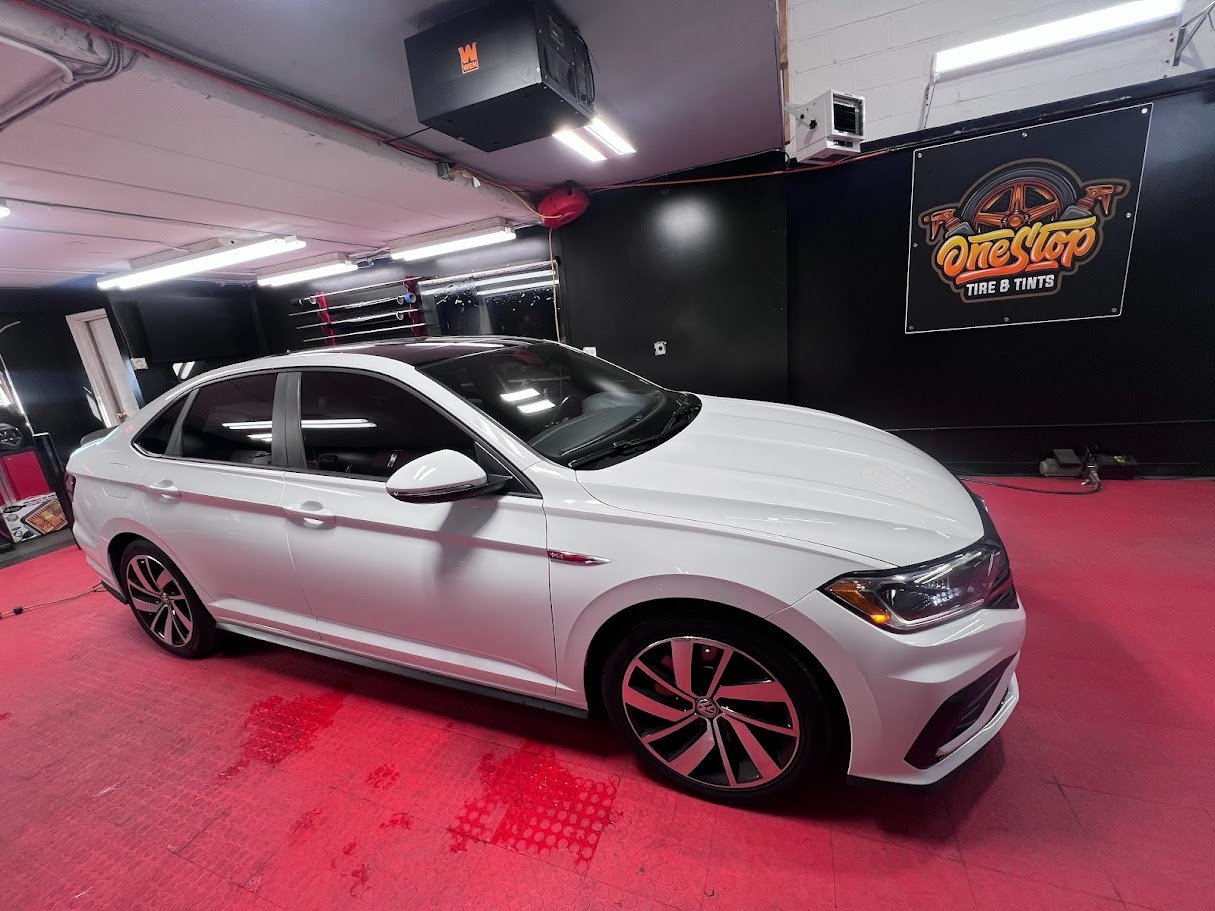At OneStop, we take pride in our elite tinting services with superior films for every application.
Hybrid films are a combination of dyed and metalized films, layered to create higher heat rejection and protection. The dyed layer blocks light and heat while the metalized layer reflects the light and heat absorption. Together they create a crisp dark appearance.
Ceramic films do not contain dyes, metals, or carbon particles. Instead, it’s made up of tiny, ceramic-based nanoparticles that are invisible to the naked eye – meaning you’ll have a cooler experience and a clearer view in your vehicle. Achieve a high rejection of solar energy and UVA/UVB rays in non-reflective black Max Cool IR.
Carbon window tinting uses carbon particles that are carefully blended into the film and provide protective properties to the glass. This is a great way to give your car that matte look and feel. Carbon window tinting has protective properties against UV rays but also against water, dirt, and other materials that can damage your car.
Window tint darkness in Maryland
The percent of visible light allowed through your car windows is called VLT: Visible Light Transmission.
The percentage of light allowed through your film and glass in Maryland is very specific and different for sedan cars and SUV cars or vans.
Tint darkness for sedans:
Windshield: Non-reflective 35% VLT tint is allowed on the AS-1 line or top 5 inches of the windshield.
Front Side windows: Must allow more than 35% of light in.
Back Side windows: Must allow more than 35% of light in.
Rear Window: Must allow more than 35% of light in.
Tint darkness for SUV and vans:
Windshield: Non-reflective 35% VLT tint is allowed on the AS-1 line or top 5 inches of the windshield.
Front Side windows: Must allow more than 35% of light in.
Back Side windows: Any darkness can be used.
Rear Window: Any darkness can be used.







































